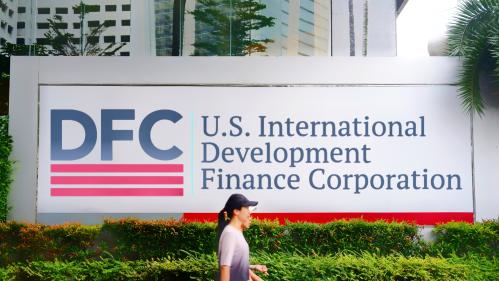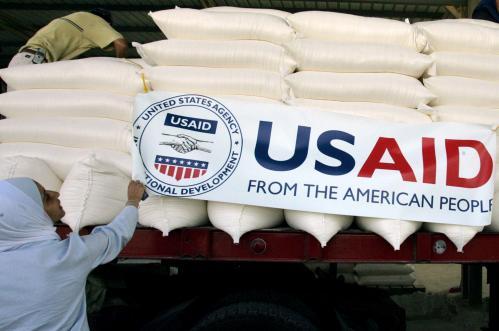Publish What You Fund’s 2016 Aid Transparency Index is out. And as a result, today we can assess whether major donors met the commitments they made five years ago at Busan to make aid transparent by the end of 2015. The index is also a window into the state of foreign aid transparency and how the U.S.—the world’s largest bilateral donor—stacks up.
The global picture
On the positive side, the index found that ten donors of varied types and sizes, accounting for 25 percent of total aid, have met the commitment to aid transparency. And more than half of the 46 organizations included in the 2016 index now publish data to the International Aid Transparency Initiative (IATI) registry at least quarterly.
At the same time, the index’s assessments show more than half of the organizations still fall into the lowest three categories, scoring below 60 percent in terms of the transparency of their information.
The U.S. picture
Continuing its leadership on transparency, the Millennium Challenge Corporation comes in second overall in the index, meeting its Busan commitment and once again demonstrating that the institutional commitment to publishing and using its data continues.
Otherwise, at first glance, U.S. progress seems disappointing. The five other U.S. donors included in the 2016 index are all in the “fair” category. Seen through a five-year lens, however, these same five U.S. donors were either in the “poor” or “very poor” categories in the 2011 index. So, all agencies have moved up, and three of them—U.S. Agency for International Development (USAID), Department of the Treasury, and the U.S. President’s Emergency Plan for AIDS Relief—are on the cusp of “good.”
In the two biggest U.S. agencies that administer foreign assistance, USAID and the State Department, the commitment is being institutionalized and implemented through more systematic efforts to revamp their outdated information systems. Both have reviewed the gaps in their data reporting systems and developed a path forward. USAID’s Cost Management Plan identifies specific steps to be taken and is well under way. The State Department Foreign Assistance Data Review (FADR) involves further reviews that need to be executed promptly in order to lead to action. Both are signs of a heightened commitment to data transparency and both require continued agency leadership and staff implementation.
The Department of Defense, which slid backwards in the last three assessments (and began at the “very poor” category in 2011), has for the first time moved into the “fair” category. It is still the lowest performing U.S. agency in the index, but it is now publishing 12 new IATI fields. It is moving in the right direction, but significant work remains to be done.
The third U.S. National Action Plan (NAP) announced last fall—the strongest issued by the U.S. to date—calls for improvements to quality and comprehensiveness of U.S. data and commits the U.S. to doing more to raise awareness, accessibility, and demand for foreign assistance data. This gives all U.S. agencies the imperative to do much more to make their aid information transparent and usable.
Going forward—what should the U.S. being focusing on?
The overall challenge has been laid out in the third NAP:
- Almost all of the U.S. agencies need to improve the breadth and depth of the information they are publishing to meet IATI standards. Far too often, basic information—such as titles—are either not published or are not useful.
- The Millennium Challenge Corporation should continue its leadership role, especially on data use. All agencies should be promoting the use of data among their own staff and by external stakeholders, especially at country level. Feedback will go a long way toward helping them improve the quality of the data they are publishing and thereby help them meet the IATI standards.
- USAID must finish the work on its Cost Management Plan, including putting IATI in the planned Development Information Solution. Additionally, more progress needs to be made on the follow-up to the Aid Transparency Country Pilot Assessment to meet the needs of partners.
- The State Department needs to follow through on including IATI in the new integrated solution mapped out in its data review.
The leadership of all foreign affairs agencies needs to work harder to make the business case for compiling, publishing, and using data on foreign aid programs. Open data, particularly when it is comparable, timely, accessible, and comprehensive, is an extremely valuable management asset. Agency leadership should be its champion. So far, we have not seen enough.
U.S. progress on aid transparency was slow to start. It is still not where it needs to be. But with a modest but concerted push, three additional agencies will be in the “good” category and that is a story we can start to be proud of.
We look forward to continued progress and to the day when all U.S. foreign aid meets transparency standards—a day I believe will be an important one for the cause of greater development, better governance, democratic participation, and reduced poverty worldwide.



Commentary
Five years after Busan—how does the U.S. stack up on data transparency?
April 13, 2016